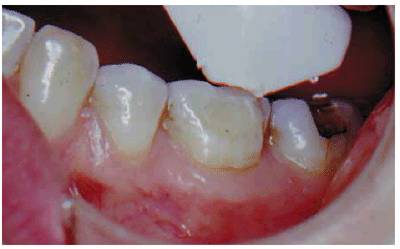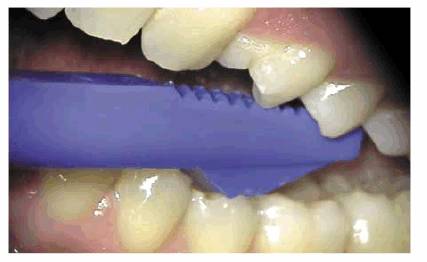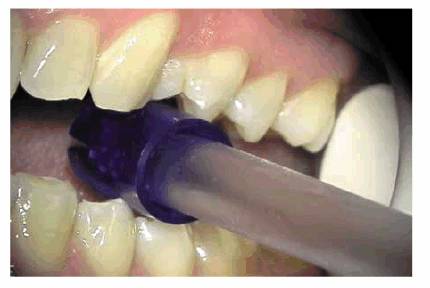ENDODONTICS AND ESTHETIC DENTISTRY(6)
Bite Test
Every time that the patient's complaint is sensitivity to biting and/or chewing, it is important to investigate further which tooth and, more importantly, which part of it are sensitive to biting pressure. This is to distinguish between vertical crown/root fractures and periapical pathosis. A very convenient instrument for this investigation is the Tooth Slooth (Professional Results,
A plastic saliva ejector may be used as an alternative instrument for this test (Figure 19-23).

Figure 19-21: Tooth Slooths, two sizes.

Figure 19-22A: Bite test with Tooth Slooth (Professional Results) checking DB cusp of mandibular molar.

Figure 19-22B: Bite test with smaller-sized (blue) Tooth Slooth.

Figure 19-23: Plastic saliva ejector is useful in bite testing the entire tooth rather than an individual cusp.
TAGS:
0% (0)
0% (10)
Sponsored Links
Daliy Dental Topics
- on 01.11.2012 [endodontics]
- on 01.11.2012 [endodontics]
- on 01.11.2012 [endodontics]
- on 10.13.2011 [endodontics]
- on 12.15.2010 [endodontics]
- on 08.11.2010 [endodontics]
Useful Links
- Long Island College Hospital - [education]
- Faculty of Dental Medicine - H [education]
- The American Association of Or [organize]
- Summer Institute in Clinical D [organize]
- Academy of Osseointegration [organize]
- University of North Carolina a [education]
- American Orthodontic Society [article]
- American Equilibration Society [article]
- Niigata University - Japan [education]
- University of Buffalo [education]